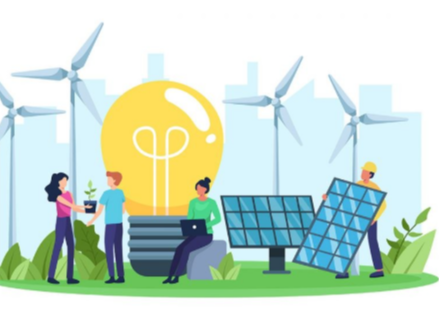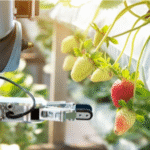Technology has emerged as a pivotal force in the fight against climate change. Innovations in renewable energy, particularly solar and wind, have shown a marked decrease in greenhouse gas emissions. Smart technologies enhance energy efficiency, while carbon capture solutions aim to mitigate atmospheric CO2 levels. Additionally, sustainable agricultural practices contribute to environmental preservation. These advancements raise questions about their collective impact and the potential for future breakthroughs in the ongoing battle against climate change.
Renewable Energy Innovations
As the urgency of addressing climate change intensifies, renewable energy innovations have emerged as critical solutions for reducing greenhouse gas emissions.
Solar advancements, such as bifacial solar panels and solar tracking systems, have significantly increased energy efficiency, enabling a more sustainable energy supply. Research indicates that these technologies can enhance energy output by up to 30%.
Similarly, wind innovations, including larger turbine designs and improved blade aerodynamics, have led to a remarkable increase in energy generation capacity. Data from the Global Wind Energy Council shows a 53% rise in global wind capacity in just five years.
Together, these advancements not only aim to mitigate climate change but also empower communities to achieve energy independence and resilience, fostering a sustainable future.
Smart Technologies for Energy Efficiency
While traditional energy systems often fall short in optimizing resource use, smart technologies for energy efficiency are revolutionizing the way energy is managed and consumed.
Smart grids exemplify this shift, utilizing advanced sensors and data analytics to enhance energy distribution and consumption patterns. Research indicates that such systems can reduce energy losses by up to 30%, significantly improving overall efficiency.
Furthermore, energy management solutions, including real-time monitoring and automated controls, empower consumers to adjust their usage based on demand and pricing signals. This not only fosters individual freedom in energy choices but also contributes to broader sustainability goals.
The integration of smart technologies is essential for transitioning toward a more responsive and efficient energy landscape, ultimately aiding in the fight against climate change.
Carbon Capture and Storage Solutions
Carbon capture and storage (CCS) technologies present a critical solution in the mitigation of greenhouse gas emissions from industrial processes and power generation. Among these innovations, direct air capture (DAC) has gained attention for its ability to extract CO2 directly from the atmosphere, offering a proactive approach to climate change.
The captured carbon can then be subjected to geological sequestration, where it is injected into deep underground formations for long-term storage, effectively reducing the concentration of greenhouse gases. Research indicates that implementing CCS at scale could potentially capture billions of tons of CO2 annually, significantly contributing to global climate targets.
As stakeholders seek sustainable solutions, CCS emerges as a pivotal strategy in the broader framework of climate change mitigation efforts.
Sustainable Agriculture and Food Technologies
The urgent need for innovative solutions to mitigate climate change extends beyond carbon capture technologies, encompassing sustainable agriculture and food technologies.
Vertical farming has emerged as a transformative method, utilizing controlled environments to increase crop yield while minimizing land use and water consumption. Research indicates that this approach can reduce agricultural carbon emissions by up to 70%.
Similarly, precision agriculture leverages data analytics and IoT to optimize resource allocation, ensuring that water, fertilizers, and pesticides are used efficiently. This technology-driven approach can lead to a significant reduction in waste and environmental impact.
Collectively, these advancements not only enhance food security but also contribute to the broader goal of sustainable practices necessary for combating climate change.
Conclusion
In the face of a warming planet, technology emerges as a beacon of hope, illuminating pathways toward a sustainable future. The synergy of renewable energy, smart grids, carbon capture, and sustainable agriculture weaves a tapestry of resilience against climate change. As innovations flourish, they transform the landscape, painting a vivid picture of cleaner skies and thriving ecosystems. By harnessing these advancements, society can cultivate a harmonious balance with nature, ensuring a viable world for generations yet to come.




 How Technology Is Driving Innovation in Food Production
How Technology Is Driving Innovation in Food Production